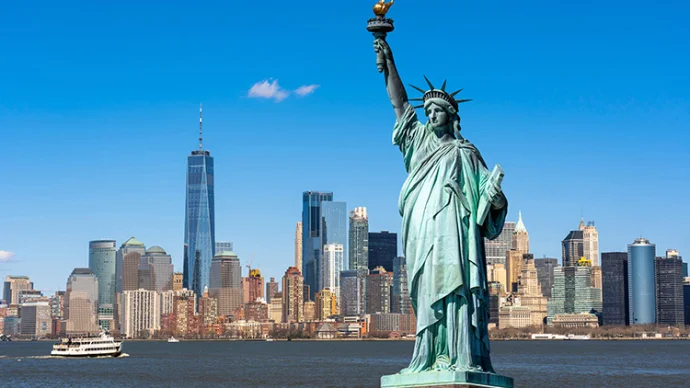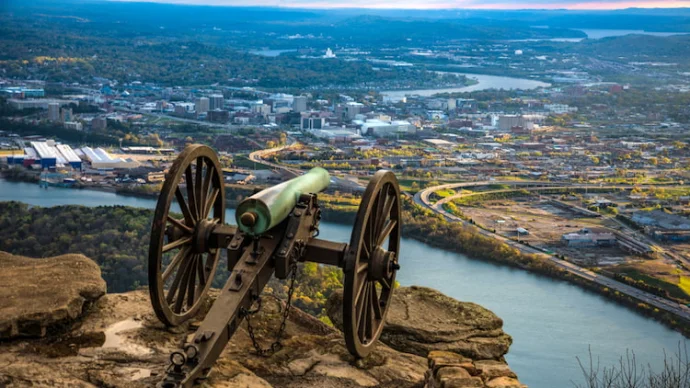
About Arlington National Cemetery
Arlington National Cemetery in Virginia is both a military burial site and an iconic monument to fallen soldiers.
History of Arlington National Cemetery
Initially, the site of Arlington Cemetery began as a house – Arlington House – built in memory of President George Washington. The house, which still stands today, then became the property of Mary and Robert E. Lee.
During the American Civil War, Lee was asked to be a Union leader but refused, waiting to see how Virginia would side. When Virginia seceded from the Union in 1861, Lee became a commander of the Confederate army and fled from Arlington House shortly before the Union crossed the Potomac River and took the land around Washington. Eventually captured, Arlington House would become a Union army base.
In January 1864, the government legally purchased Arlington House and, later that year, desperately in need of space to bury the increasing number of war casualties, Quartermaster General Montgomery Meigs designated Arlington a national cemetery – a function for which it had unofficially already been used. By the end of the conflict in 1865, Arlington housed the graves of over 5,000 soldiers.
Over the years, Arlington National Cemetery has come to represent a memorial to all US soldiers who have died for their country and is still an active cemetery. In fact, there are approximately 400,000 graves at Arlington National Cemetery, neatly aligned and each with a white headstone.
With its status as a nationally heritage site, Arlington National Cemetery has also formed the location of numerous monuments. Amongst these are The Arlington Memorial Amphitheatre, where memorials and funerals are held, the United States Marine Corps Memorial, an iconic statue depicting soldiers raising the American flag and the Women in Military Service for America Memorial.
Arlington National Cemetery is also the home of The Tomb of the Unknowns, a burial place for one unidentified soldier from each of World War One, World War Two and the Korean War. There was a soldier from the Vietnam War, but he was later identified and moved. Many famous Americans are buried at Arlington National Cemetery, from military heroes to astronauts such as John Glenn and leaders such as President John F. Kennedy.
Arlington National Cemetery today
Those visiting Arlington National Cemetery can start at the visitor centre, where there are guide books, maps and exhibits. Arlington House itself is also open to the public, with a museum and guides chronicling this building’s unique history.
The site is unsurprisingly huge (covering 624 acres): there’s a handy hop-on hop-off bus that departs regularly from the visitors centre if you want to see the key points. Look out for the infamous Confederate Memorial, the Iwo Jima memorial, located in the northern fringes of the cemetery, the eternal flame by the tomb of JFK and the changing of the guard, which happens regularly.
Getting to Arlington National Cemetery
Arlington is just over the Potomac River from Washington D.C, meaning it’s in Virginia. It’s hard to miss: it borders the Pentagon, and Interstate 395, the South Washington Boulevard and Arlington Boulevard enclose it. There’s plenty of parking on Memorial Avenue, and the cemetery is also reached by public transport from Arlington Cemetery, Pentagon or Rosslyn metro.
Featured In

Historic sites in Washington D.C.
A guide to 10 of the very best historic sites in America's capital city, including The Capitol, Lincoln Memorial and The White House.

10 Beautiful Cemeteries in the World
These graveyards around the world are home to dazzling architecture, breathtaking vistas and moving monuments to the dead.

US Historic Sites
Discover some of the best historic sites in the United States, from iconic sites like the White House, Statue of Liberty, and Mount Rushmore, to the more hidden historical gems like Historic Jamestowne, Taos Pueblo, and the Freedom Trail in Boston.

US Civil War Sites
Discover the most interesting Civil War locations to visit, from Fort Sumter to the Museum of the Civil War Soldier and more, includes an interactive map of Civil War sites.




















